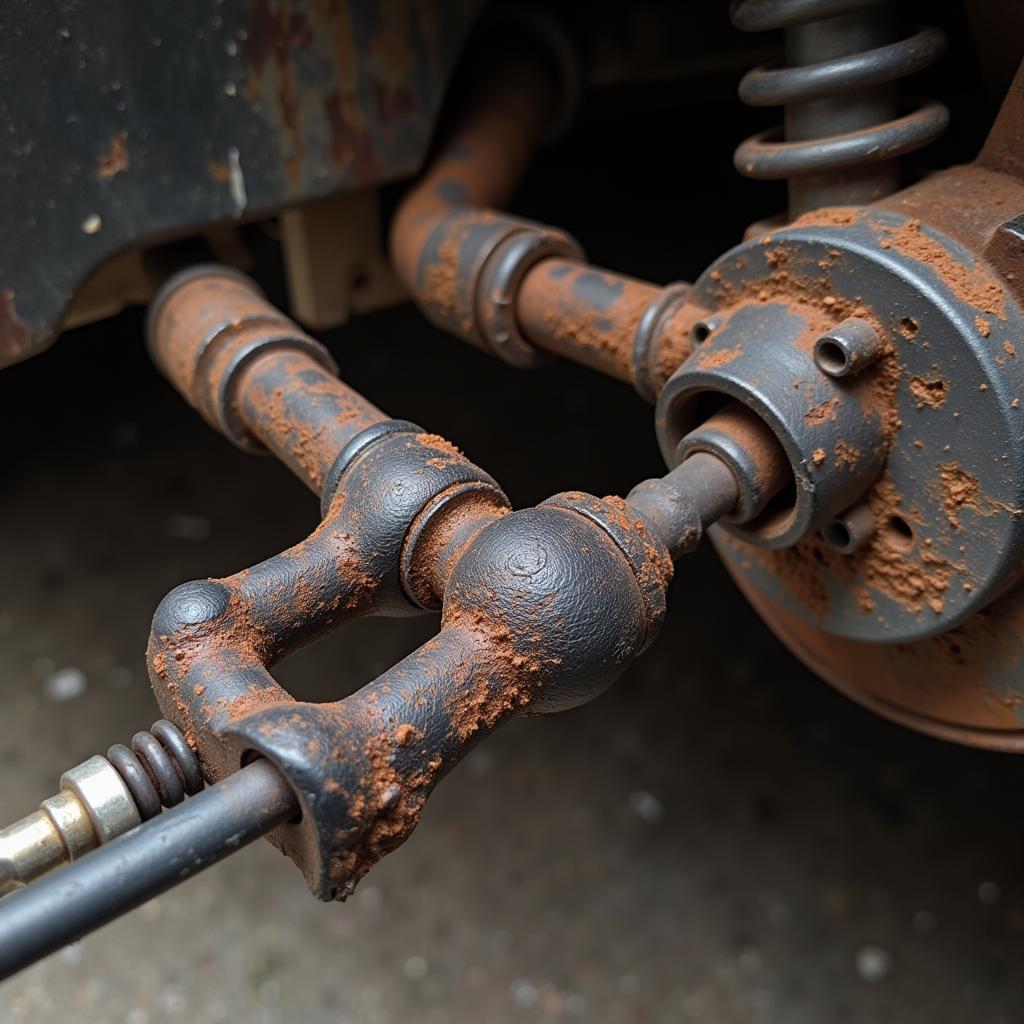After Car Service Handbrake On and Twang: What’s Going On?
So you’ve just had your car serviced, and now something’s off. You pull the handbrake, and instead of a smooth click, there’s a strange resistance followed by a “twang” sound. Don’t panic, it might not be as serious as it sounds. This article will guide you through the possible causes and solutions for a handbrake issue after car service.
Common Causes of a Handbrake “Twang” After Service
There are a few likely culprits when your handbrake acts up after a visit to the mechanic. Let’s break them down:
1. Improper Handbrake Adjustment
 Handbrake Adjustment Mechanism
Handbrake Adjustment Mechanism
This is the most common reason for a handbrake feeling tight and making a “twang”. During a service, mechanics often work around the brakes, and sometimes the handbrake cable can get nudged out of adjustment. This can lead to the cable being overtightened, causing the “twang” when engaged or released.
2. Sticking Handbrake Cable
 Rusted Handbrake Cable
Rusted Handbrake Cable
Over time, especially in areas with harsh weather conditions, the handbrake cable can become corroded or collect debris. This can cause it to stick, making the handbrake feel stiff and potentially leading to the “twang” noise as it’s forced to move.
3. Rear Brake Issues
While less common, sometimes the issue might stem from the rear brakes themselves. If your car was recently serviced and the rear brakes were worked on, it’s possible something wasn’t assembled correctly. This could be a misplaced spring, a sticking caliper, or even an issue with the brake pads.
What to Do: Troubleshooting Your Handbrake
Here are some steps to help you troubleshoot the issue:
- Check the Handbrake Lever: How many clicks does it take for the handbrake to engage fully? Ideally, it should be between 3-8 clicks. If it’s engaging on the first click or taking more than 8 clicks, the cable likely needs adjusting.
- Inspect the Handbrake Cable: If you’re comfortable working on your car, visually inspect the handbrake cable under the vehicle. Look for any signs of damage, rust, or kinks.
- Listen Carefully: When applying and releasing the handbrake, try to pinpoint the location of the “twang”. This can help you narrow down whether it’s coming from the lever mechanism, the cable, or the rear brakes themselves.
When to Seek Professional Help
While some handbrake adjustments can be simple DIY tasks, it’s crucial to remember that brakes are safety-critical components. If you’re not comfortable working on your car or are unsure about diagnosing the issue, it’s always best to consult a qualified mechanic.
Driving with a malfunctioning handbrake can be dangerous. If you experience a “twang” or any other unusual behavior from your handbrake, address it promptly to ensure your safety and the proper functioning of your vehicle.

